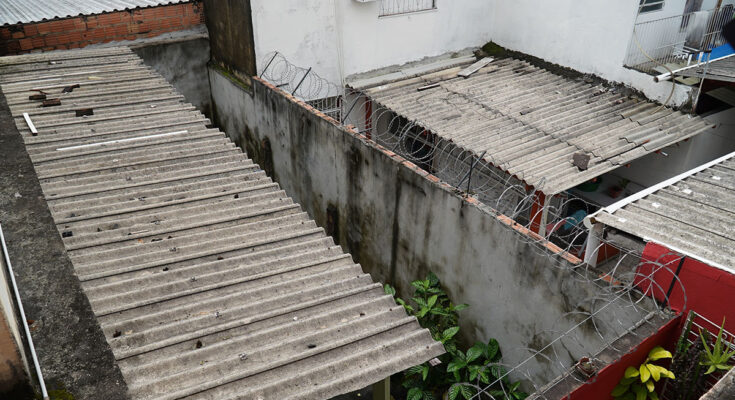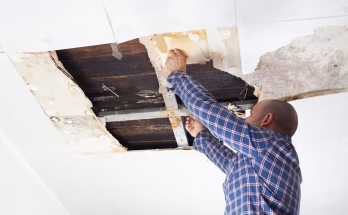Asbestos was widely used in military buildings during the Vietnam War, posing serious health risks to veterans. This dangerous material was favored for its fire-resistant and insulating properties. Here are some key points about its prevalence:
Common Uses of Asbestos in Military Infrastructure
- Bunkers and Barracks: Asbestos was used in the construction of bunkers and living quarters to provide insulation and fire protection.
- Aircraft and Ships: Many military vehicles, including aircraft and naval ships, contained asbestos in their construction materials.
- Wiring and Insulation: Asbestos was commonly found in wiring and insulation in mess halls and other buildings, increasing the risk of exposure.
Impact on Vietnam Veterans
- Increased Risk: Veterans who served during this time are at a higher risk of developing serious health issues due to asbestos exposure.
- Long-Term Exposure: Many veterans were unknowingly exposed to asbestos while serving, leading to potential health problems later in life.
- Environmental Factors: The use of asbestos in construction materials in Vietnam and the surrounding areas contributed to widespread exposure.
Long-Term Health Risks Associated with Asbestos
- Asbestosis: A chronic lung condition caused by inhaling asbestos fibers, leading to scarring of lung tissue.
- Mesothelioma: A rare and aggressive cancer primarily linked to asbestos exposure, affecting the lining of the lungs and abdomen.
- Lung Cancer: Increased risk of lung cancer among veterans exposed to asbestos, especially those who smoked.
Understanding the prevalence of asbestos in military buildings during the Vietnam War is crucial for recognizing the ongoing health risks faced by veterans.
Health Risks of Asbestos Exposure for Vietnam Veterans
Types of Asbestos-Related Diseases
Vietnam veterans face a higher risk of developing serious health issues due to asbestos exposure. Some of the most common diseases include:
- Mesothelioma: A rare cancer affecting the lining of the lungs and abdomen.
- Asbestosis: A chronic lung disease caused by inhaling asbestos fibers.
- Lung Cancer: Increased risk, especially for those who smoked.
Symptoms to Watch For
Veterans should be aware of symptoms that may indicate asbestos-related diseases. Key symptoms include:
- Persistent cough or changes in cough patterns.
- Shortness of breath or difficulty breathing.
- Chest pain or tightness.
- Unexplained weight loss.
Long-Term Prognosis for Affected Veterans
The long-term outlook for veterans exposed to asbestos can vary. Factors influencing prognosis include:
- Type of Disease: Veterans with mesothelioma often have a poor prognosis, while asbestosis may progress more slowly.
- Stage of Diagnosis: Early detection can improve treatment outcomes.
- Overall Health: Pre-existing health conditions can complicate recovery.
Veterans are encouraged to seek regular health screenings and report any concerning symptoms to their healthcare providers.
Lung Cancer from Asbestos in Military Bases: A Growing Concern
Asbestos exposure in military bases has become a serious issue, especially for veterans who served during the Vietnam War. Many of these veterans were unknowingly exposed to asbestos, which can lead to severe health problems, including lung cancer.
How Asbestos Causes Lung Cancer
- Inhalation of Fibers: When asbestos materials are disturbed, tiny fibers can become airborne. Breathing in these fibers can lead to lung damage over time.
- Cell Damage: Once inhaled, asbestos fibers can cause inflammation and scarring in the lungs, which may eventually lead to cancer.
- Long Latency Period: Symptoms of lung cancer may not appear until many years after exposure, making it difficult to connect the disease to past asbestos exposure.
Statistics on Lung Cancer Among Veterans
- High Incidence Rates: Studies show that veterans exposed to asbestos are at a significantly higher risk of developing lung cancer compared to the general population.
- Estimated Deaths: Approximately 40,000 veterans have died from asbestos-related diseases, with lung cancer being a leading cause.
- Ongoing Risks: Even decades after service, veterans continue to face risks due to lingering asbestos in military buildings and equipment.
Preventive Measures and Early Detection
- Regular Health Screenings: Veterans should undergo regular health check-ups to monitor lung health, especially if they have a history of asbestos exposure.
- Awareness Programs: Educational programs can help veterans recognize symptoms of lung cancer early, improving chances of successful treatment.
- Advocacy for Safe Practices: Continued efforts to remove asbestos from military facilities can help protect current and future service members from exposure.
Asbestos Use in Navy Ships During the Vietnam War
During the Vietnam War, the U.S. Navy extensively used asbestos in its ships. This practice raised serious health concerns for veterans who served on these vessels. Here’s a closer look at the situation:
Extent of Asbestos Use in Naval Vessels
- Widespread Application: Almost every military ship was constructed or repaired using asbestos materials. This included everything from flooring tiles to electrical wiring and piping systems.
- Types of Ships Affected: Various types of naval ships contained asbestos, such as:
- Aircraft carriers
- Destroyers
- Submarines
- Frigates
- Tugboats
- High-Risk Areas: Areas below deck, like engine rooms and boiler rooms, had the highest concentrations of asbestos, exposing sailors continuously.
Health Impact on Navy Veterans
- Increased Risk: Navy veterans are at a greater risk of developing serious illnesses due to asbestos exposure compared to other military branches.
- Long-Term Effects: Many veterans have reported health issues, including lung diseases and cancers, linked to their time on ships filled with asbestos.
- Ongoing Concerns: Even after the war, veterans continue to face health challenges related to their exposure during service.
Case Studies of Affected Navy Personnel
- Personal Accounts: Many veterans have shared their experiences of working in environments filled with asbestos, detailing the lack of safety measures.
- Impact on Lives: The health issues faced by these veterans have significantly affected their quality of life, leading to long-term medical care and support needs.
- Lessons Learned: These cases highlight the importance of awareness and preventive measures for future military personnel.
Compensation and Support for Veterans Affected by Asbestos
Vietnam veterans who have been exposed to asbestos during their service may face serious health issues later in life. Fortunately, there are various forms of compensation and support available to help them manage these challenges.
VA Benefits for Asbestos-Related Illnesses
Veterans diagnosed with illnesses related to asbestos exposure can apply for benefits through the Department of Veterans Affairs (VA). Some key points include:
- Eligibility: To qualify, veterans must have an honorable discharge and provide evidence linking their illness to asbestos exposure during service.
- Disability Compensation: Veterans with conditions like mesothelioma, asbestosis, or lung cancer may receive monthly payments based on the severity of their disability.
- Health Care: Many veterans can access low-cost or free health care services through the VA.
Legal Options for Compensation
In addition to VA benefits, veterans may explore legal avenues for compensation:
- Asbestos Trust Funds: These funds were established by courts to compensate individuals harmed by asbestos products. Veterans can access these funds for financial support.
- Lawsuits: Veterans may file lawsuits against manufacturers of asbestos-containing materials. Successful claims can result in significant settlements, often averaging between $1 million and $1.4 million.
Support Resources for Veterans and Families
Support is also available for veterans and their families:
- Counseling Services: Many organizations offer counseling to help veterans cope with the emotional and psychological effects of their illnesses.
- Support Groups: Joining support groups can provide veterans and their families with a community of individuals facing similar challenges.
- Educational Resources: Various organizations provide information on asbestos-related diseases and the benefits available to veterans, helping them navigate their options.
Asbestos Exposure in Army Barracks and Bases
Asbestos was commonly used in U.S. Army barracks and bases from the 1930s until the early 1980s. Many service members were unaware of the dangers associated with this material. Here’s a closer look at the situation:
Common Sources of Asbestos in Army Facilities
- Building Materials: Asbestos was found in drywall, insulation, and roofing materials.
- Flooring: Many barracks had asbestos tiles that could release fibers as they aged.
- Pipes and Ducts: Asbestos was used in plumbing and heating systems, posing risks during repairs.
Jobs with High Risk of Exposure
Certain roles within the Army had a higher chance of coming into contact with asbestos:
- Construction Workers: Those involved in building or renovating barracks.
- Mechanics: Workers handling vehicles that contained asbestos parts.
- Maintenance Crews: Personnel responsible for upkeep and repairs in older buildings.
Measures Taken to Mitigate Exposure
To protect service members, the Army has implemented several strategies:
- Asbestos Removal: Ongoing efforts to safely remove asbestos from older buildings.
- Health Screenings: Regular check-ups for veterans to monitor any health issues related to asbestos exposure.
- Education: Informing personnel about the risks of asbestos and how to minimize exposure.
The Role of Asbestos in Military Vehicles and Aircraft
Asbestos was widely used in military vehicles and aircraft during the Vietnam War due to its unique properties. It provided excellent heat resistance and insulation, making it a popular choice for various components. However, this also led to significant health risks for those who worked with or around these vehicles.
Types of Vehicles and Aircraft Containing Asbestos
- Land Vehicles: Asbestos was found in parts like brake linings, clutches, and engine gaskets. These components often faced high levels of friction and heat, making asbestos a useful material.
- Aircraft: Asbestos was used in heat shields, insulation, and brake pads. While it was usually contained, mechanics faced high exposure levels during maintenance and repairs.
- Heavy Machinery: Similar to land vehicles, heavy machinery contained asbestos in brake pads and electrical wiring, exposing operators and mechanics to harmful fibers.
Health Risks for Mechanics and Operators
- Inhalation of Asbestos Fibers: When working on vehicles or aircraft, mechanics could inhale asbestos dust, leading to serious health issues.
- Long-Term Health Effects: Diseases like lung cancer and mesothelioma can develop years after exposure, making early detection difficult.
- Increased Risk for Veterans: Many veterans who worked on these vehicles and aircraft are now facing health challenges related to their asbestos exposure.
Efforts to Remove Asbestos from Military Equipment
- Regulations and Guidelines: The military has implemented regulations to limit asbestos use and promote safer practices.
- Ongoing Cleanup Efforts: Many military bases are undergoing cleanup to remove asbestos from older equipment and facilities.
- Health Monitoring Programs: Veterans are encouraged to participate in health screenings to catch any asbestos-related diseases early.
Secondhand Asbestos Exposure Among Military Families
Many military families lived on bases where asbestos was present. If a service member worked with asbestos, their family could be at risk of secondhand exposure. This can happen in several ways:
How Secondhand Exposure Occurs
- Bringing Home Asbestos Dust: Service members who worked with asbestos might carry dust on their clothes or skin, exposing family members when they return home.
- Shared Living Spaces: Families often lived in close quarters, increasing the chances of inhaling or touching asbestos fibers.
- Household Activities: Cleaning or doing laundry with contaminated items can spread asbestos fibers in the home.
Health Risks for Family Members
Family members of veterans exposed to asbestos may face serious health risks, including:
- Lung Cancer: A significant risk for those exposed to asbestos fibers.
- Mesothelioma: A rare cancer linked directly to asbestos exposure.
- Asbestosis: A chronic lung condition caused by inhaling asbestos fibers.
Preventive Measures for Families
To reduce the risk of exposure, families can take these steps:
- Wash Work Clothes Separately: Always wash the service member’s clothes separately to avoid contamination.
- Avoid Dusty Areas: Stay away from areas known to have asbestos, especially during renovations.
- Regular Health Check-ups: Schedule regular health screenings to catch any potential issues early.
The Ongoing Battle Against Asbestos in Military Settings
Asbestos exposure in the military remains a serious issue for veterans and military personnel. Despite efforts to reduce its use, many military settings still contain asbestos, posing ongoing health risks. Here’s a closer look at the current situation:
Current Asbestos Regulations in the Military
- Regulations: The military has implemented stricter regulations regarding the use of asbestos in new constructions.
- Monitoring: Regular inspections are conducted to identify and manage existing asbestos in older buildings.
- Training: Personnel are trained to recognize and safely handle asbestos materials.
Challenges in Removing Asbestos
- Cost: The removal of asbestos can be very expensive, often requiring significant funding.
- Safety Risks: Removing asbestos can release harmful fibers into the air, posing risks to workers and nearby residents.
- Old Infrastructure: Many military buildings are old, making it difficult to safely remove asbestos without extensive renovations.
Future Directions for Asbestos Management
- Research: Ongoing research is needed to find safer alternatives to asbestos in military applications.
- Awareness Campaigns: Increasing awareness about the dangers of asbestos among military personnel and their families is crucial.
- Support Systems: Developing support systems for veterans affected by asbestos-related diseases is essential for their health and well-being.
Historical Context: Asbestos Use in the U.S. Military
Timeline of Asbestos Use in Military History
Asbestos was widely used in the U.S. military from the 1930s until the mid-1970s. During this time, it was considered a valuable material for various reasons:
- Insulation: It helped keep buildings and equipment warm or cool.
- Fireproofing: It protected against fires, making it safer for soldiers.
- Durability: Asbestos was strong and could withstand wear and tear.
Reasons for Widespread Use
The military favored use of asbestos for several key reasons:
- Cost-Effective: It was cheaper than many other materials.
- Availability: Asbestos was easy to obtain and use in construction.
- Versatility: It could be used in many applications, from ships to barracks.
Initial Awareness of Health Risks
Although some early warnings about asbestos hazards existed, the military continued to use it extensively. The dangers became clearer over time, leading to:
- Increased Research: Studies began to show the link between asbestos and serious health issues.
- Regulatory Changes: By the late 1970s, the military started to phase out asbestos use, but many buildings and ships still contained it.
- Ongoing Health Issues: Veterans exposed to asbestos during their service continue to face health risks today.
Case Studies of Vietnam Veterans Affected by Asbestos
Personal Stories of Affected Veterans
Many Vietnam veterans have shared their experiences with asbestos exposure, highlighting the serious health issues they face. Here are a few notable cases:
- Jeff Burdine: A Navy veteran who served aboard the USS Neosho, Burdine was diagnosed with asbestosis in 2012. He regularly cleaned steam pipes wrapped in asbestos insulation, believing this was his only source of exposure. His diagnosis allowed him to receive compensation from the VA.
- Allen Johnson: Another Navy veteran, Johnson served on the USS Randall and worked in an engine room filled with asbestos dust. He was diagnosed with mesothelioma and began receiving monthly compensation of $894 in 2004, which he felt was insufficient for the challenges he faced due to his illness.
- David Cutts: A Marine Corps veteran, Cutts was diagnosed with mesothelioma in 2005, nearly 40 years after his service in Vietnam. He suspects his exposure came from a Navy ship used to transport troops.
Impact on Quality of Life
The health issues stemming from asbestos exposure have significantly affected the lives of these veterans:
- Physical Health: Many veterans experience severe respiratory problems, chronic pain, and fatigue due to asbestos-related diseases.
- Emotional Well-being: The stress of dealing with a serious illness can lead to anxiety and depression, impacting their overall quality of life.
- Financial Strain: Medical bills and the inability to work can create financial hardships for veterans and their families.
Lessons Learned from These Cases
These personal stories reveal important lessons about asbestos exposure:
- Awareness: There is a need for greater awareness about the risks of asbestos, especially among veterans and their families.
- Compensation: Veterans should be informed about their rights to compensation and support for asbestos-related illnesses.
- Preventive Measures: Understanding the dangers of asbestos can help prevent future exposure for current and future military personnel.
Preventive Measures and Health Screenings for Veterans
Importance of Regular Health Screenings
Regular health check-ups are crucial for veterans, especially those who may have been exposed to asbestos. These screenings can help catch any health issues early. Here are some key points:
- Annual Check-Ups: Veterans should schedule yearly visits with their healthcare provider to monitor their lung health.
- Specialized Tests: Doctors may recommend specific tests, like chest X-rays or CT scans, to look for signs of asbestos-related diseases.
- Awareness of Symptoms: Veterans should be educated about the symptoms of asbestos-related illnesses, such as persistent cough or shortness of breath.
Available Health Programs for Veterans
There are various health programs designed to support veterans who may have been exposed to asbestos. Some options include:
- VA Health Care: The Department of Veterans Affairs offers comprehensive health care services, including screenings for asbestos-related conditions.
- Support Groups: Joining support groups can provide veterans with emotional support and information about managing their health.
- Educational Resources: Veterans can access materials that inform them about the risks of asbestos and the importance of regular health check-ups.
Steps to Take if Exposed to Asbestos
If a veteran suspects they have been exposed to asbestos, they should take the following steps:
- Consult a Doctor: Seek medical advice as soon as possible to discuss any concerns about exposure.
- Document Exposure: Keep records of military service and any known exposure to asbestos, as this information can be important for health assessments.
- File for Benefits: Veterans may be eligible for benefits related to asbestos exposure, so it’s important to contact the VA for assistance.




